My favorite shop in Ginza right now is Rousokuya (蝋燭屋). They serve delicious mapo tofu noodles, tantanmen, and hot and sour noodles. There’s usually a long line at lunchtime. Also, Rengatei (煉瓦亭), which is located to the left of Rousokuya, has a long line during lunch hours as well. So, sometimes it’s hard to distinguish where one shop ends and the other begins.

Recently, some branches have opened in Omotesando, Umeda (Osaka), and Sapporo. Because of this, the line at the Ginza main shop has become shorter than before.
They offer an English menu and serve four types of spicy noodles.

You can choose the level of spiciness for all their noodles from three options: Low (薄辛), Middle (普辛), and High (倍辛). If you want your noodles even spicier, you can add extra chili pepper, Sichuan pepper, or chili oil for an additional charge of 100 yen each. In summer, they also serve cold noodles.
At the entrance of the shop, there’s a ticket vending machine. During lunchtime (and on weekends), they offer half-size rice for free. All noodles contain local Sichuan pepper, except for the hot and sour noodles.

The shop is narrow but long, with counter seats on both the left and right sides along the walls. The kitchen is at the back of the shop, and each seat has a paper apron for customers to wear.

Condiments on the table: From left (behind the toothpick) to right: blended vinegar, chili oil, and Budou Sansho oil.

Budou Sansho oil (ぶどう山椒) is Taihaku sesame oil that has been infused with Budou Sansho, a type of Sichuan pepper produced in Kisyu, Wakayama Prefecture. “Budou” means “grape,” as the pepper is grown in a way similar to grapes. This oil has a fragrant flavor and goes well with all types of noodles. There is an explanation of the condiments on the wall, so you can use them according to your preferences.
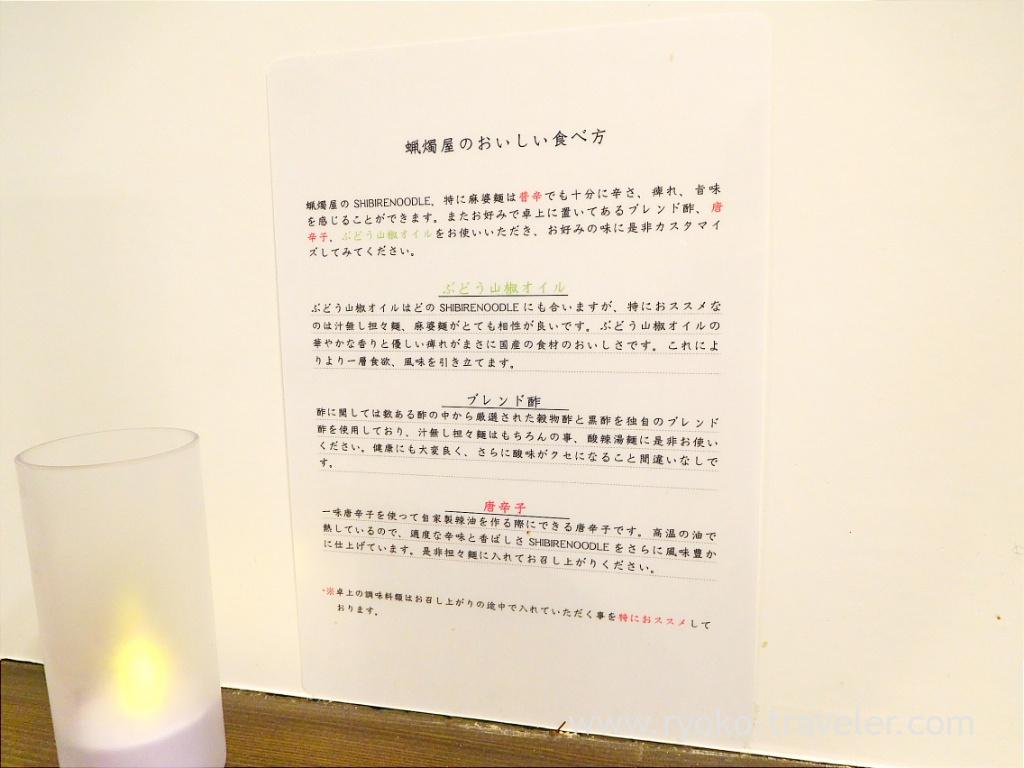
Budou Sansho oil: Great for all noodles, especially for the dandan noodles and mapo tofu noodles.
Blended vinegar: Best for dandan noodles and hot and sour noodles.
Chili oil: Perfect for tantanmen noodles.
This is their No. 1 dish: Mapo tofu noodles. I love it, too. As the name suggests, the noodles are topped with a generous amount of mapo tofu, which is packed with Sichuan pepper.

They serve half rice at lunchtime without charge. I had it between bites of my mapo tofu noodles because the dish was very spicy.

It’s also delicious to mix the rice into the soup or add mapo tofu on top of the rice. 🙂
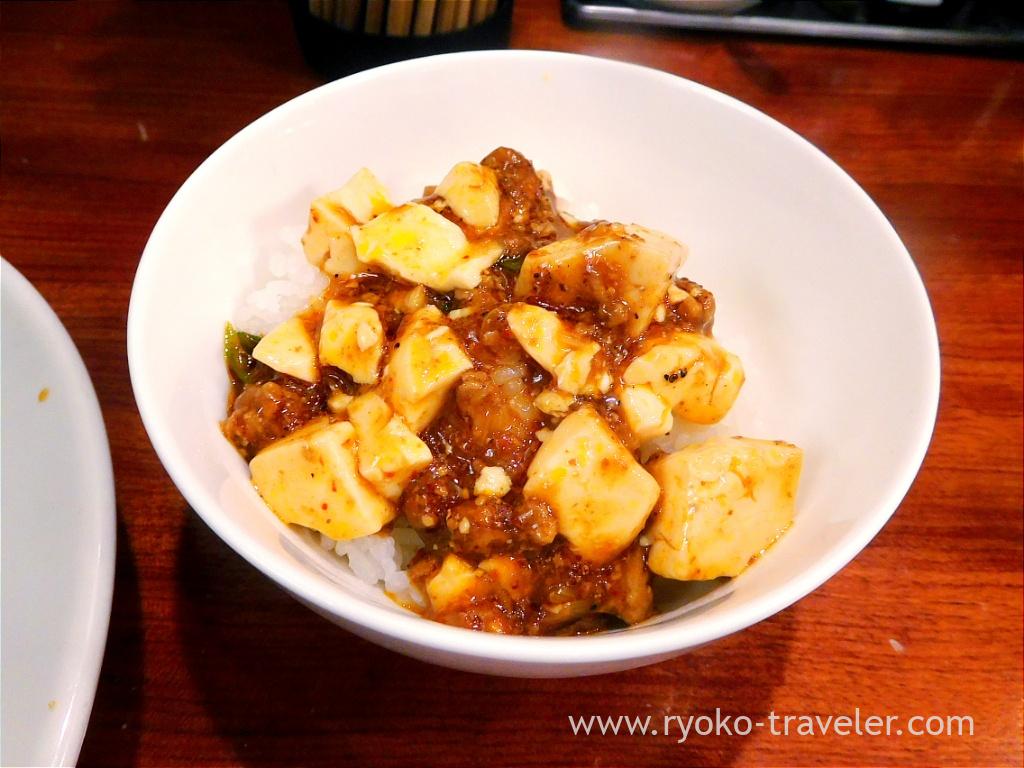
The thick, springy noodles are perfectly coated in mapo tofu. I ordered mine with normal spiciness, but it turned out to be quite spicy—deliciously so. I couldn’t stop eating. Of course, it’s incredibly tasty, and I think it would also go well just with rice and mapo tofu on its own. The mapo tofu itself is absolutely delicious.

It’s no wonder people wait in line for this. And of course, the mapo tofu pairs perfectly with draft beer. 🙂
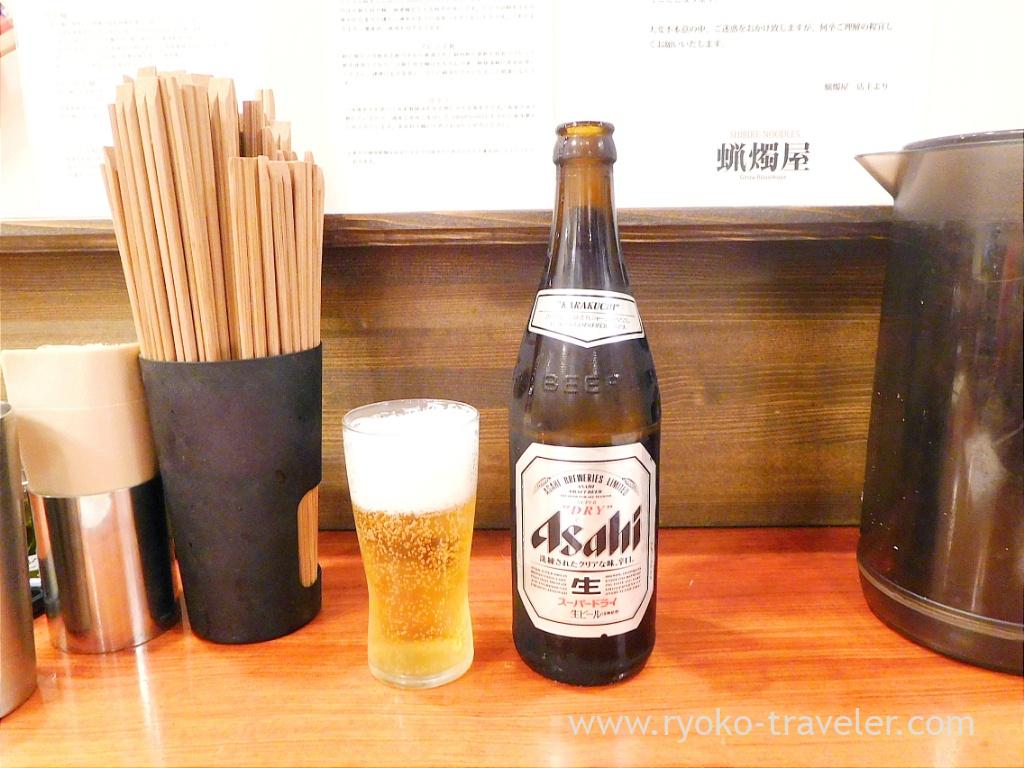
I also had coriander on top.
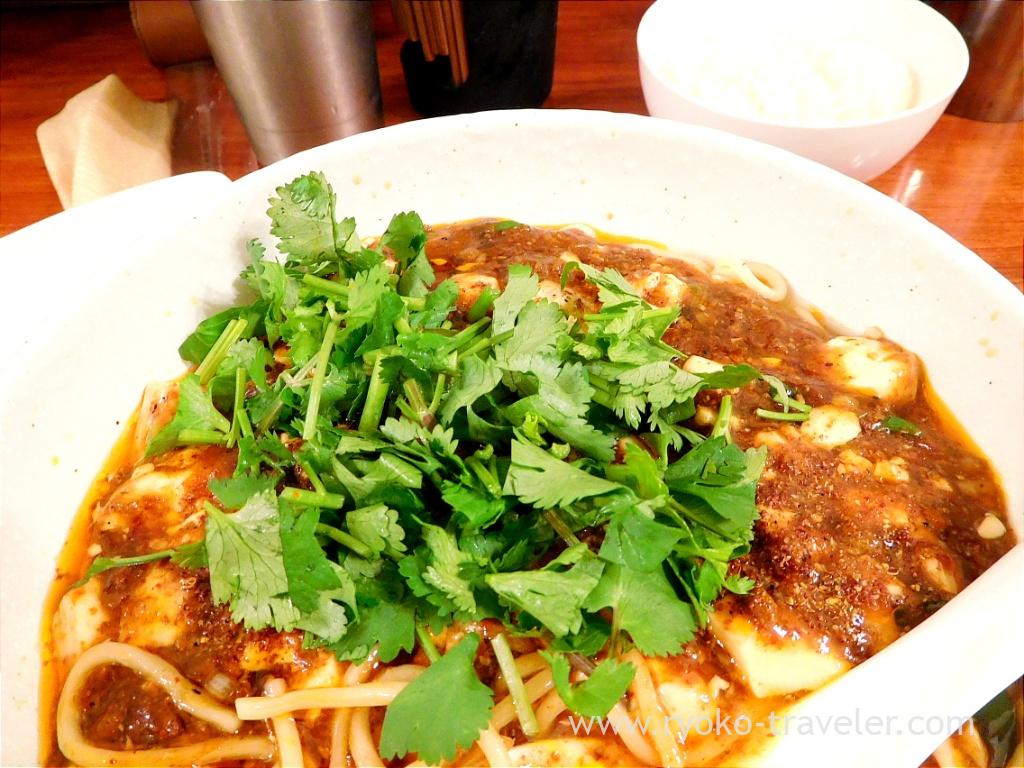
When I first visited, I tried Tantanmen noodles with normal spiciness. It contains minced meat, chili oil, white sesame, black sesame, ground white sesame, peanuts, and more. It doesn’t look spicy, but the flavors are bold.

The noodles are thin and have a smooth sesame texture, with a strong kick from the Sichuan pepper. It’s delicious.

The tantanmen noodles I had last time were at the highest level of spiciness. The soup had a deeper color than usual, and actually, my nose started to run…

However, it wasn’t too spicy at first, so I felt comfortable. But after a while, the Sichuan pepper started to tingle my tongue. I think the regular version is better than the stronger one, as I can enjoy the ramen all the way through without the overwhelming heat.
I also tried the dandan noodles. For some reason, they’re 20 yen cheaper than the other noodles.

I think these noodles are the same as the mapo dofu noodles. The noodles, coated with the sauce, are sticky and hard to mix thoroughly. There’s a lot of minced meat, peanuts, black sesame, white sesame, chili pepper, green onions, dried shrimp, and sauce on top. After mixing everything together well, I ate it.

The sauce is thick, similar to the dandan noodles at Unrinbo (雲林坊) in Akihabara. Adding Budou Sichuan pepper oil brought a refreshing flavor to it.
This is hot and sour noodle soup.

It’s different from the other three noodles. It doesn’t have as much Sichuan pepper. It’s tangy and spicy, and just as addictive as the others!
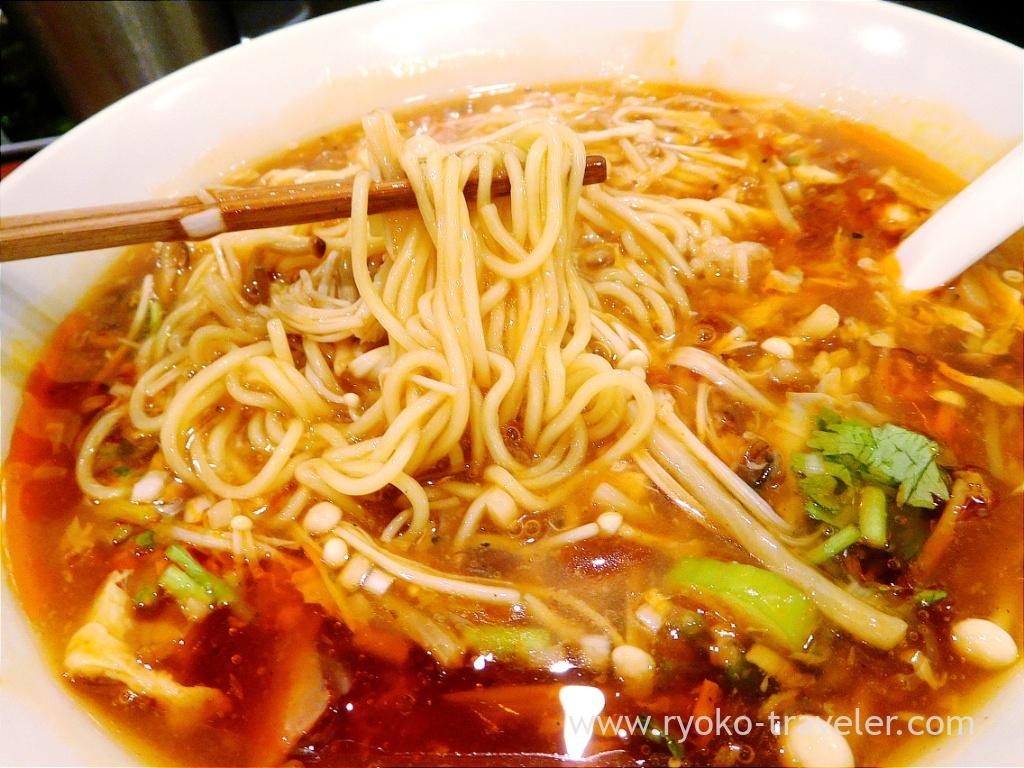
It’s especially popular among women, as it contains a lot of enoki mushrooms, making it quite healthy. The sourness is mild, so even if you don’t like strong sour flavors, you should still be able to enjoy it. It comes with coriander, but I wanted more, so I ordered an extra portion for 200 yen.

It was great! 😉

About
Name Rousokuya (蝋燭屋)
Open Lunch, Dinner
Reservation Unavailable
Credit card Unavailable
URL Twitter, Instagram
Google Map



Comments